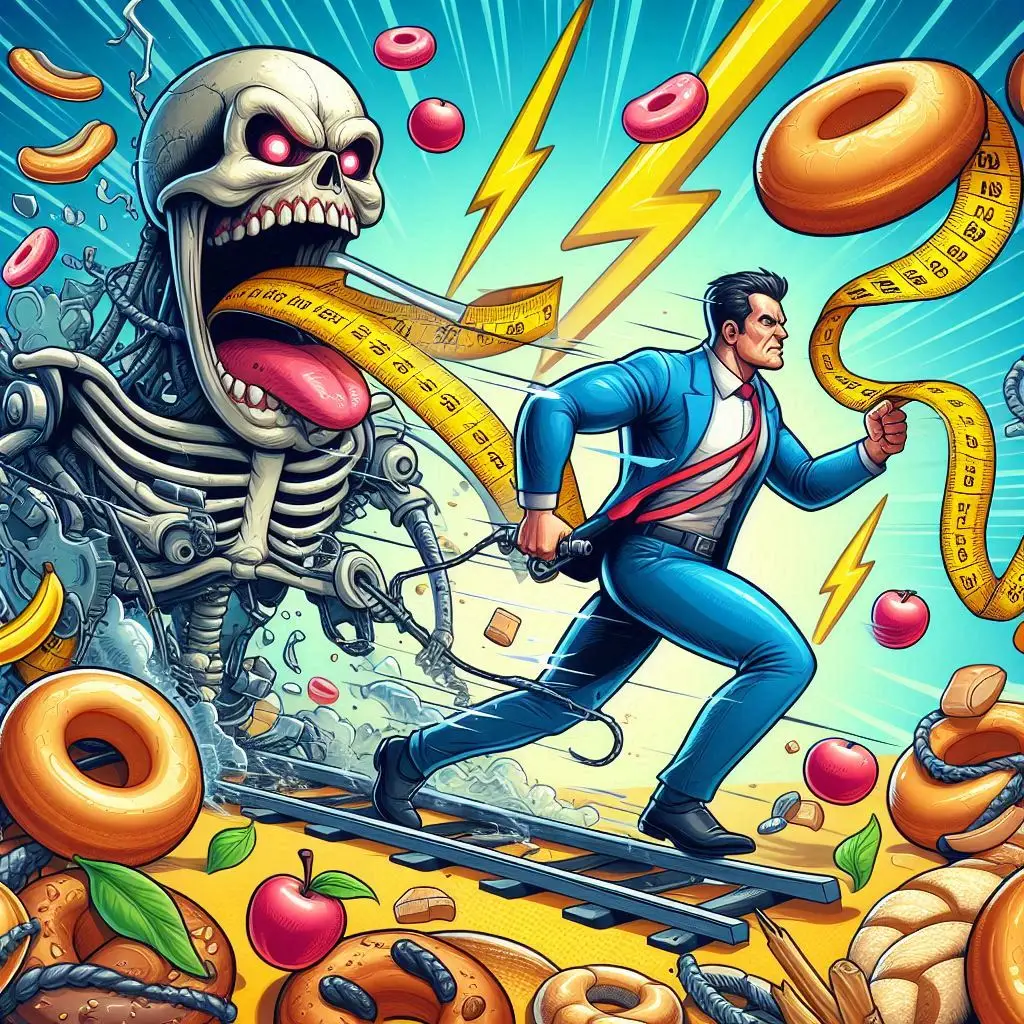Imagine your body as a hybrid car — designed to run on both electricity (carbs) and fuel (fats). For years, it’s been cruising comfortably on electricity, with sugar-laden meals and carb-heavy snacks powering every move. Suddenly, without warning, you cut the power. No bread, no rice, no pasta, no sugar. The engine jolts. It sputters. Then, like a survival machine, it switches to fuel mode and starts burning fat. This dramatic switch is the essence of the Low-Carb Shock Diet, a strategy firmly rooted in the world of drastic weight loss methods.

What Is the Low-Carb Shock Diet?
The Low-Carb Shock Diet isn’t just a regular low-carb plan — it’s a carbohydrate purge. Often limited to 20 grams or fewer of carbs per day, it pulls the nutritional rug out from under your body, forcing it into ketosis almost overnight. It’s like hitting a metabolic emergency button, sending a shockwave through your system that results in rapid weight loss, water depletion, and fat burn — often within just a few days.
It’s not for the faint of heart. But for those chasing fast results, it can feel like a magic trick — one moment you’re bloated, the next you’re down five pounds.
Why It’s So “Shocking”
Carbohydrates are your body’s primary source of energy. When you suddenly remove them, the body doesn’t ease into fat-burning mode with a gentle transition — it panics, adapts, and shifts. This sudden metabolic switch is what gives the diet its name — shock. You’re shocking your system out of its sugar dependence and pushing it to become a fat-burning furnace.
- Glycogen Depletion: Your muscles and liver store carbs as glycogen, which holds water.
- Ketosis Kick-in: With carbs gone, the liver produces ketones, shifting the body into a high-fat-burning state.
This is why it’s celebrated in circles that swear by drastic weight loss methods — the results are visible within days.

Tashbeehi Andaz: Turning Off the City’s Power Grid
Think of your body like a bustling city that runs on electricity — carbs. Suddenly, the power grid goes down. Chaos erupts at first: traffic lights stop, elevators freeze, computers crash. But then backup generators (fats) kick in. The city adapts, but it’s running differently — slower in some areas, faster in others, more efficient in unexpected ways.
This metabolic reboot is what the Low-Carb Shock Diet promises — a kind of controlled chaos that leads to a leaner, more efficient system. But just like a city in blackout mode, it’s not a long-term solution without significant infrastructure support.
The Benefits That Attract the Brave
- Reduced appetite due to ketone production
- Stable blood sugar levels and lower insulin spikes
- Mental clarity after the initial fog lifts
These benefits make it attractive to those seeking a drastic weight loss method before a big event, photo shoot, or health check.
The Hidden Dangers: Not All That Drops Is Fat
The “shock” isn’t just felt in your waistline — your whole body feels it:
- Electrolyte imbalances leading to cramps and weakness
- Digestive issues, such as constipation due to low fiber
- Nutrient deficiencies if not managed properly
- Mood swings and irritability from low serotonin (carbs influence mood)
This is the dark side of many drastic weight loss methods: fast results, but fragile health if not handled responsibly.
Is It Sustainable?
Here’s the catch — shock isn’t meant to last. It’s a short-term jolt, not a lifelong rhythm. Most people can’t — and shouldn’t — live in a constant state of carb deprivation. The real goal should be to use the Low-Carb Shock Diet as a launchpad into a more balanced, sustainable low-carb or moderate-carb eating plan.
Handle with Caution
The Low-Carb Shock Diet is like a sledgehammer — powerful, quick, and effective at breaking through fat plateaus. But it’s also blunt, intense, and potentially harmful if misused. In the ever-growing list of drastic weight loss methods, it sits high on the scale of both effectiveness and volatility.
If you’re looking to drop pounds fast, it may deliver. But like any shock to the system, it demands preparation, understanding, and a plan for what comes next. Because weight loss isn’t just about the fall — it’s about where you land.




